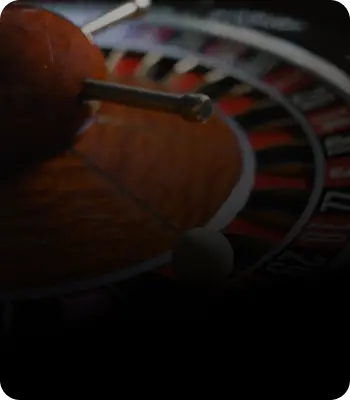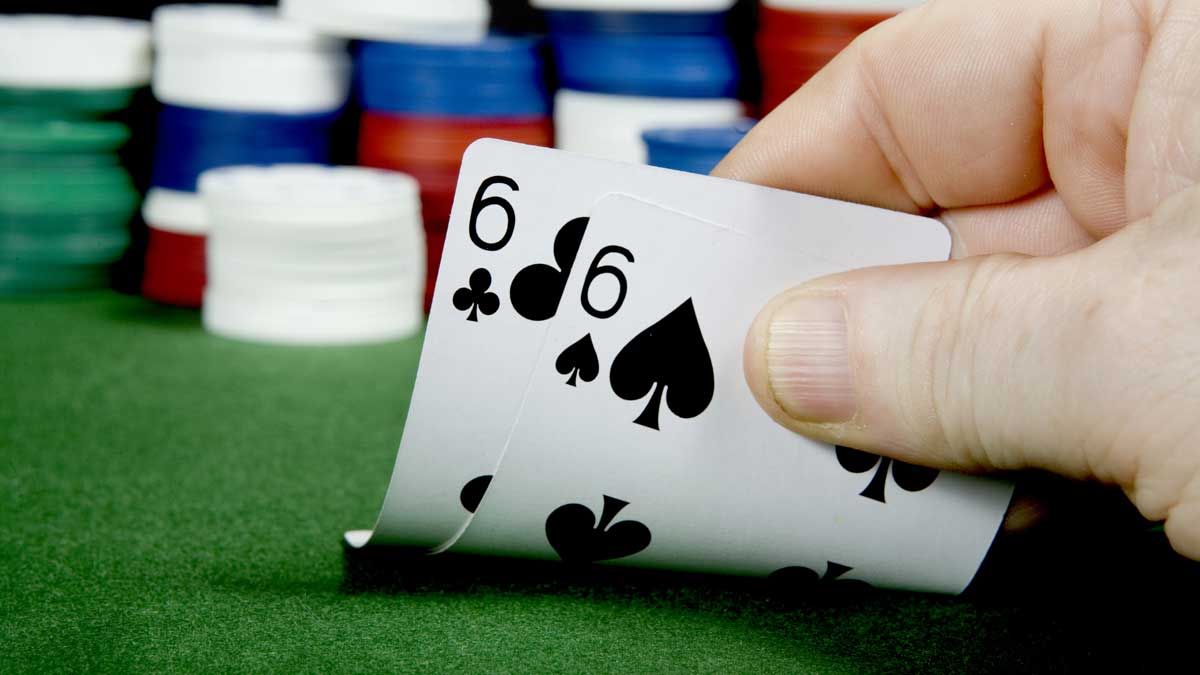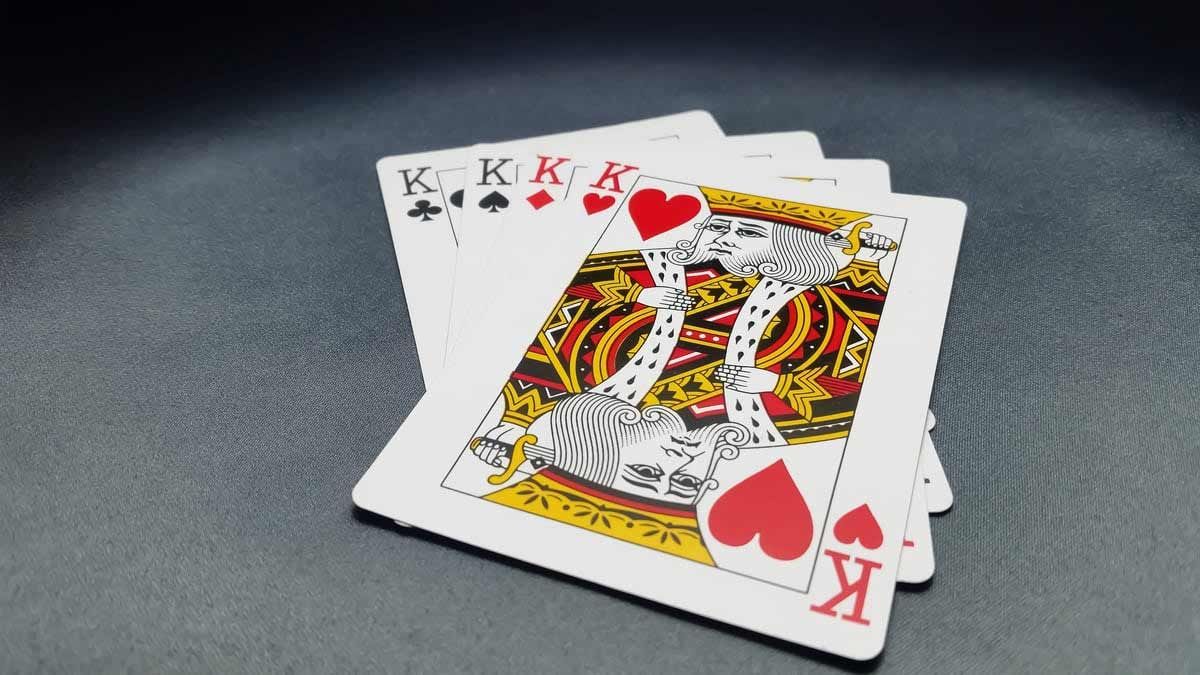
Suited connectors can be tough to play, especially if you're a beginner, but do it right, and they are a potent weapon that will enable you to gain an edge over opponents, regardless of whether you're playing online poker or sitting at a brick-and-mortar casino.
In Texas Hold'em, suited connectors can be a tricky hand to play. But if you understand how to approach them correctly, they can prove extremely profitable. In this article, we’ll reveal the right way to play suited connectors in a range of scenarios.
What Are Suited Connectors?
As the name suggests, suited connectors are cards that are both from the same suit, that are also next to each other in terms of rank. An example would be the seven and the eight of Clubs, or the Jack and Queen of Hearts. This is predominantly a term used in Texas Hold’em, but it can be heard in other forms of poker too.
Although hands like K-Q suited are technically suited connectors, the term usually refers to holdings that do not have a picture card.
Introduction to Playing Suited Connectors
There is a good reason why this type of hand is considered attractive to many poker players. Suited connectors offer the potential to win a big pot while giving you the chance to easily get away if it doesn’t work out–if you play them correctly, that is.
A premium pocket pair such as pocket aces is going to win you a small pot a lot of the time, but it can lead to trouble when you fall in love with the hand. There is obviously a far lower risk of being in that situation with suited connectors. However, the real beauty of this type of holding is its drawing potential.
Suited connectors open up a number of possibilities for straights and flushes, but you need to keep in mind that with these hands, you're still subject to the luck of the draw. However, another great thing about basing your strategy around suited connectors is the fact that it can allow you to retreat if the hand doesn't go your way.
Since draws don’t hit all that often, it’s rarely a good strategy to limp with your connecting cards. Doing so doesn’t give you enough to play with when the flop fails to deliver, so it’s important to play suited connectors aggressively pre-flop. This way, if you miss, you can still take a stab with a continuation bet and have a chance to win.
Position And Suited Connectors
 As with any type of poker hand, the position is an important consideration when playing suited connectors. Whenever your opponent acts after you, you are at a huge disadvantage. Playing this type of hand out of position is not especially profitable, so proceed with caution. For instance, you should only call a pre-flop raise with such a hand on rare occasions -- there is simply too much still to be determined, and if you do call, you may lock yourself into a losing play.
As with any type of poker hand, the position is an important consideration when playing suited connectors. Whenever your opponent acts after you, you are at a huge disadvantage. Playing this type of hand out of position is not especially profitable, so proceed with caution. For instance, you should only call a pre-flop raise with such a hand on rare occasions -- there is simply too much still to be determined, and if you do call, you may lock yourself into a losing play.
You might look to use this type of holding to balance out your range from time to time. For the most part, you should fold suited connectors whenever you are in an early position. However, if you’re nearer to the button, they become much stronger.
They are usually worth a raise if it folds around to you in a late position. You may find yourself picking up a fair number of pots uncontested.
Always pay attention to your position before making bets. If you're in the middle position, it may be tempting to go for the 3-bet. Depending on your appetite for risk, you might follow through with it, but keep in mind that it can severely decrease your bluffing opportunities later in the game.
Pre-Flop Suited Connectors Strategy
When playing a suited-connector hand before the flop, you need to play aggressively in order to max out your chances of winning. As we already mentioned earlier, it is best if you're in the early position in this scenario so that you can raise the stakes in a large 2-bet, potentially making some of your opponents fold right there and then.
As a preflop raiser, you will go into the flop with a big pot, fewer other players at the table, and the potential for quite a few great hands -- if it doesn't turn out to be a straight draw for you, you'll still have the chance to hit a two pair or another decent hand that will at least allow you to stay in the game.
As you can see, the situation is a bit different when it comes to relying on suited-connector hands post-flop. Read on for more tips on how to keep a cool head and use your cards wisely after three out of five draws are already on the table.
The 3-Bet Question
Many poker aficionados and experts disagree on what is the most optimal strategy regarding the 3-bet when playing suited connectors. The 3-bet refers to the first re-raise in the game, which usually occurs before the flop. A post-flop re-raise is also called a 3-bet, though. In the context of suited connector strategies, it is important to be very mindful of the pre and post-flop distinction, as it plays a big role in determining whether or not 3-betting makes sense when playing that type of hand.
As a general rule, you should be as aggressive as possible in the pre-flop stage -- if you're in a late position and have the opportunity to re-raise soon after the big blind bet was placed and raised, you should do it. Making a 3-bet before the flop leaves you with plenty of leeways to back out and try a different tactic when the draw doesn't go according to plan. However, doing so post-flop carries much more risk with it, as you will be facing radically lower odds of winning unless, of course, the three revealed cards are a good match for your suited connector pair.
How To Play Suited Connectors After The Flop
 If you do find a call, you’ll hold a big advantage when playing post-flop due to your initial raise. Almost all of the time, you’ll be looking to throw out a continuation bet as it’s hard to put you on this type of holding. Assuming you don’t take the pot uncontested, the texture of the flop will determine how to proceed next.
If you do find a call, you’ll hold a big advantage when playing post-flop due to your initial raise. Almost all of the time, you’ll be looking to throw out a continuation bet as it’s hard to put you on this type of holding. Assuming you don’t take the pot uncontested, the texture of the flop will determine how to proceed next.
If you made absolutely no draws at all, there’s no need to be stubborn. Remember that part of the attraction of suited connectors is that they are easy to get away from. On the other hand, if you flopped a straight or flush draw, you would have to start sizing your bets accordingly, to make sure you get the right pot odds to continue drawing.
Mistakes to Avoid With Suited Connectors
Let’s take a look at some common errors that poker players make with this type of holding. Due to the fairly attractive implied odds when holding suited connectors in your hand, many players tend to fall in love with the idea of striking gold with a full house or a straight flush, which is why it is important to keep in mind that the situation may change in a heartbeat, especially in a game as dynamic as Hold'em.
Four-Betting
If you’re facing a three-bet when holding suited connectors, you’re likely to be beaten. Even so, you may wish to balance out your four-bet range by bluffing with this type of holding. However, by then, you will be out of the semi-bluff territory and into the area of straight-up wishful thinking.
This is because the problem is that, in order to get a bluff through, you need your opponent to be holding the same kind of cards. And they are far less likely to be semi-bluffing with a hand like A-6 if you’re holding a 6 too. So, as a rule, avoid four-betting with suited connectors.
Overplaying Against Small Stacks
It’s true that suited connectors should always be played aggressively, but poker is all about situations. There is rarely a strategy that applies to all spots all the time. This is no exception.
Think about how shorter stacks are going to play when facing a raise. They are never going to flat call. If they opt to play, they are likely to get their money in. If they do, you have no room to play post-flop. This removes one of the biggest reasons to play these hands in the first place.
Similarly, if it’s the short stack doing the three bettings, don’t flat call in that spot. Remember that you’re often playing suited connectors because of the implied winning potential. If the opponent has little left behind, you’re not going to get the required return on investment.
Overplaying Against Calling Stations
Again, it’s always important to remember why you are playing this type of hand at all. One of the main factors is that they make for great semi-bluffing hands. Against a player who never folds, however, this benefit is completely negated. You can afford to slow down against this type of player.
The Bottom Line
Playing suited connectors is always risky, but depending on the stack depth, your position, and a variety of other factors, you could end up scoring big by following one of the suited connectors strategies we've outlined above. The implied odds of success are great when working with these hands, but it's important not to "fall in love" with these odds, as they only represent the potential of your cards, not a guarantee of a big pot win.
So while it is important to play aggressively whenever following a suited connectors strategy, these plays are not going to be suitable for every draw you get. Keep that in mind when hedging your bets!































